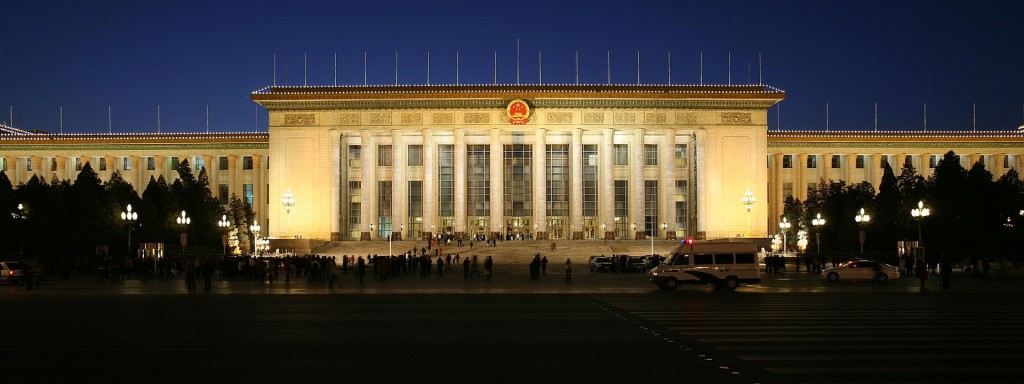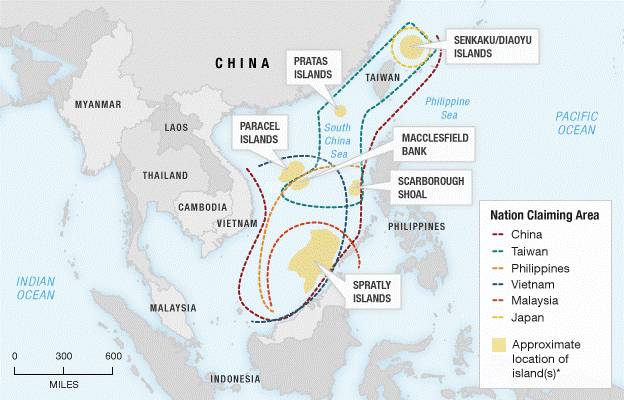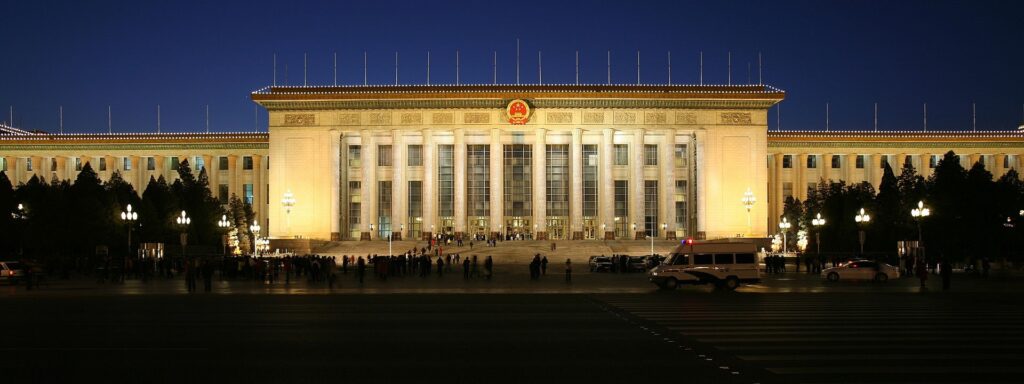
The Middle Kingdom Returns
A great deal of fuss has been made recently about China’s foreign policy activities. Its economic shifts, naval activity and foreign investments have all received extensive coverage worldwide. However, the real focus should be on China’s future moves and long-term intentions. Casual observers often have short-term memories and horizons, but to observe China casually would be a grave error for any strategist or policymaker. Beijing is pursuing two clear foreign policy objectives: first, China will seek reunification with Taiwan, which is the unstated end goal of its recent naval buildup and maritime expansion. Second, Beijing will move to acquire undisputed hegemony in Central Asia to secure access to vital natural resources and resolve several domestic concerns. China hopes to achieve both goals by mid-century.
Fortunately for its neighbors, China’s ambitions and strategies are rarely new. The Middle Kingdom often reaches back into its historic memory for guidance. Mao Zedong was facing a border dispute with India soon after consolidating control of his nation. Rather than relying solely on information about the present-day dispute and the capabilities of Chinese forces, Mao called together his advisors to tell them two stories of ancient Chinese dynasties that dealt with hostilities in the same region years before. The Chinese leadership chose to heed their ancestral lessons, and launched a restrained military operation with clearly limited aims. Their forces amassed along the front lines, dealt a fast, punishing strike against Indian forces and then promptly retreated back to their original positions. The Chinese didn’t take any land, but the Indian forces realized they would be unable to withstand any future assaults. India retreated from the disputed territory, just as Mao intended.
Strategic knowledge is not the only benefit of having maintained a literate civilization for over two millennia. Historic durability has also ingrained contemporary China with a sense of pride in their culture and accomplishments. Like the United States, China believes in its own exceptionalism. But unlike Americans, who proclaim their nation’s Manifest Destiny, the Chinese look back on thousands of years of history and see themselves as the rightful heirs of the empires that have dominated Asia. China will not face any challenge today or in the future that it has not seen before. All the answers lie in the history of a civilization that has outlasted nearly every known historical entity. Mao’s twentieth century forces used different weapons and technologies in their wars, but employed a strategic calculus developed by their ancestors. We can expect the same of China’s present and future leaders.
China’s present day circumstances are not new. Its economy is stagnating because the foreign trade that fueled its rise is now tapering off, so it needs to boost domestic consumption and internal economic activity. The nation has been struggling to construct larger hydroelectric dams and import more coal, oil and natural gas to stave off energy shortages. The country is still reeling from a population explosion, and the one child policy has led to an overabundance of young male citizens. The country also faces a food deficit of drastic proportions, having one of the world’s highest ratios of citizen dependence on each acre of domestic farmland. It simply cannot produce enough food for its billion-plus population, and must import from abroad despite its massive irrigation projects and centrally planned agricultural system. The Communist party also has political incentives to boost domestic consumption. Its political roots lie among rural Chinese citizens, and it cannot ignore its original base of support. With over a billion people to feed, the government must take food security into its own hands.
China’s Plan for Taiwan
Chinese strategic thought has often been traced back to wei qi, a board game now known as Go. The game rewards strategies of encirclement. Each player places his or her stones on the board, and can remove an opponent’s stone by surrounding it in each direction. In more recent times, Chinese strategy has employed measures designed to build up a psychological advantage in global affairs. By acting unpredictably, China can draw objectively stronger nations into diplomatic activity on Chinese terms, and prevent hostile nations from executing clearly defined policies to counter Chinese moves. It has already achieved psychological superiority among its neighbors in the South China Sea. Only Indonesian and Japanese maritime forces have faced down Chinese expansionism, despite the United States’ public backing of the maritime claims of Vietnam, the Philippines and other nations in their disputes with China.
Given the position of new Chinese military outposts in the South China Sea, one can easily see that it aims to encircle Taiwan while keeping foreign powers focused elsewhere as it develops the capacity to blockade Taiwanese waters. The encirclement can be achieved by consolidating control of the Pratas Islands, located southwest of Taiwan, and the Senkaku-Diaoyu islands to the northeast. Although Beijing claims both of these territories, Taiwan presently controls the Pratas Islands and Japan has maintained its claims of the Senkaku-Diaoyu Islands. Despite the importance of these archipelagos, most of the international focus has been on the South China Sea’s distant islands and shoals claimed by Vietnam, the Philippines, Indonesia, Malaysia and other nations. The Philippines is Taiwan’s southern neighbor, and the only American ally proximate to Taiwan. By distracting the Philippine navy in the South China Sea and drawing American focus to islands that are hundreds of nautical miles from Taiwan, China can keep Filipino and US naval resources out of the reach of Taiwanese waters.
Additionally, there has been greater focus recently on North Korea, which is aggressively expanding its rocket, ballistic missile and nuclear capabilities. China will certainly attempt to capitalize on a moment when regional powers are distracted by North Korean military activities like their recent nuclear test. East Asian nations should expect a move against Taiwan to occur once China has solidified adequate control over its desired possessions in the East China Sea, when regional navies are concentrating their attention on the South China Sea, and in the immediate aftermath of a major event in North Korea. Taiwan, despite possessing a formidable military and alliance with the United States, will likely be forced to the negotiating table under the strain of a Chinese blockade. The United States and other nations that are friendly with Taiwan have few geo-strategic imperatives to defend its sovereignty. If successful, China will have achieved a milestone sought for generations.

The Long Term Target: Central Asia
Despite its recent naval buildup, the Chinese military’s strength still lies in the People’s Liberation Army, or PLA. China has 1.6 million men on active duty but only a handful engaged in active missions. As the Chinese government grows more comfortable with its maritime claims, it will turn its attention to Central Asia, a region which may hold the solutions for many of the challenges facing the Communist party. The real subject of debate is how China will exercise its power in Central Asia. Beijing will have to decide whether to use its economic heft or military power as the cornerstone of its future hegemony.
Wars can be useful for a country. They invigorate economies by demanding domestic production of military hardware and supplies, and China has the factory infrastructure to support a military campaign. It also has a young male population, and as the Gulf Arab nations learned recently, a large population of unemployed young men is a recipe for political uprising. The Communist leadership is aware of this, and will not risk political legitimacy by letting young Chinese go unemployed. Although China is not at any sort of breaking point right now, its domestic pressures will continue to grow in the coming decades, and may determine whether or not China opts to engage Central Asia peacefully.
Central Asia is the most viable area for Chinese expansion simply because the region poses the least risk to Beijing while offering tangible rewards. Chinese strategists would not want to upset the Korean Peninsula, where Chinese soldiers fought South Korea and a UN coalition (made of almost entirely American military forces) in the Korean War from 1950 to 1953. Although China can extract concessions out of foreign nations by tightening or loosening its grip on the North Korean regime, it has no long-term interest in changing the status quo there. Southeast Asia, which is home to large quantities of natural resources, could provide some of what China will need in the future. It would be possible for a conflict to sprout in Vietnam, for example, if today’s maritime scuffles turn into tomorrow’s conquests. But the cost of attempting to conquer densely populated Southeast Asian nations would almost certainly outweigh the benefits of imperialism. China has little to gain by crossing the Himalayas into India’s traditional sphere of influence or by advancing north to the Mongolian and Russian steppes.
Central Asia has been a Russian domain for most of the past two centuries, but that is changing. The American incursion into Afghanistan was accompanied by new Western interest in Central Asian countries such as Uzbekistan and Kyrgyzstan, which housed NATO bases for many years. Additionally, the resource-rich republics of Turkmenistan and Kazakhstan have sought to diversify their clientele of natural gas and oil buyers. They have both formed economic relationships with European and East Asian nations, including China, which now purchases vast quantities of hydrocarbons once controlled by Moscow. China knows that it can secure future energy supplies by making more lucrative offers to Central Asian suppliers and by building pipeline infrastructure. In 2012, over half of China’s gas imports came from Turkmenistan alone, and its dependence on Central Asian energy is continuing to rise.
In addition to offering energy security options, Central Asia has the potential to satisfy China’s demand for food resources and electricity supplies. The Fergana Valley, jointly controlled by Uzbekistan, Tajikistan and Kyrgyzstan, is one of the most agriculturally productive locations in the world. Uzbekistan controls the most productive fields, which it has traditionally leveraged to grow cotton for export. Kyrgyzstan controls the water supplies, and Tajikistan controls a mountain pass providing easy access to the valley. Central Asia’s two largest rivers, the Syr Darya and Amu Darya, are two of the largest in the world and can be harnessed for even more hydroelectric power than they already produce.
With Russia increasingly focused on Eastern Europe and the Middle East, China will find future opportunities to develop influence in Central Asia. To access the Fergana Valley and the rivers powering its agricultural system, it will need to get through Kyrgyzstan and Tajikistan, two of the most rugged and underdeveloped nations in the world. China will have no problem pumping aid money, infrastructure projects, and other strategic investments into both countries. Meanwhile, Russia will struggle to keep its own economy afloat and lose sight of Kyrgyzstan and Tajikistan, since they have very little to offer Russia in terms of real economic or political benefit.
Kyrgyzstan is a member of the Eurasian Economic Union (EEU) and Tajikistan is a prospective member. The Russian-designed EEU imposes high tariffs on trade with non-EEU members, hampering both states’ abilities to trade with China. This will become burdensome for Kyrgyzstan and unattractive for Tajikistan as China becomes a larger trading partner. China’s Silk Road Economic Belt (SREB) program, initiated by current Chinese President Xi Jinping, will invest at least $40 billion into these and other countries to support infrastructure projects in Eurasia that will later underpin Chinese overland trade. The prospects of Chinese integration are so high that there is already speculation that Kyrgyzstan will leave the EEU relatively soon.
Kyrgyzstan and Tajikistan are both members of the Russian-led Collective Security Treaty Organization (CSTO). The CSTO is a defensive pact similar to NATO, and also includes Kazakhstan, Belarus and Armenia. Recently Russia has refocused its security priorities in Europe and the Middle East, notably by annexing Crimea and engaging in limited wars in Ukraine and Syria. It is entirely possible that Kyrgyzstan and Tajikistan, sensing Russia’s preoccupation with other regions, will seek a new security alignment with China. Beijing could use facilities in each nation as bases for security operations in northern Pakistan and Afghanistan. China committed $329 million worth of aid to Afghanistan in 2014, and is investing billions in Pakistan. Beijing will not allow the Taliban or other insurgent actors to undermine its economic activism, and this reality will drive China to seek closer security relationships with Kyrgyzstan and Tajikistan as well.
Once Kyrgyzstan and Tajikistan are within China’s orbit, Beijing will leverage its access to the Fergana Valley. Chinese demand for crops could encourage the Uzbek regime (currently undergoing an unprecedented power shift in the wake of President Islam Karimov’s death) to restructure its economy and better manage water resources. If China can establish a security presence in Kyrgyzstan and Tajikistan, the Uzbeks would be dependent on Chinese controlled water resources. Uzbekistan may someday find itself paying tribute to Beijing with cash crops, not unlike how “barbarian” leaders once obliged dynastic Chinese emperors. Alternatively, the Uzbeks could find themselves facing a legitimate military threat from the PLA.
China has historically targeted long-term gains in its foreign policy, so long as its domestic politics have been stable enough to allow a continuum of its grand strategy. Unlike Western powers that tend to base foreign policy initiatives on values and principles that are revised with each election cycle, Chinese policies are rooted in well-defined goals and objectives with clear benefits for the country. Foreign policymakers need to acknowledge Chinese interests in Taiwan and Central Asia and plan for dealing with China’s power projections to ensure their own foreign policies are not derailed by Beijing’s future moves.
The views expressed by the author do not necessarily reflect those of the Glimpse from the Globe staff, editors or governors.







